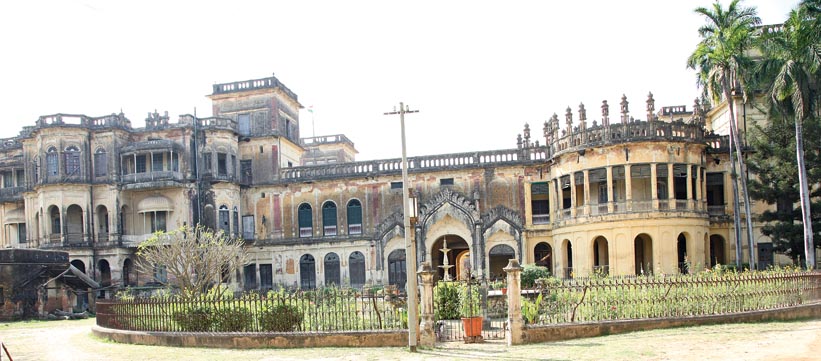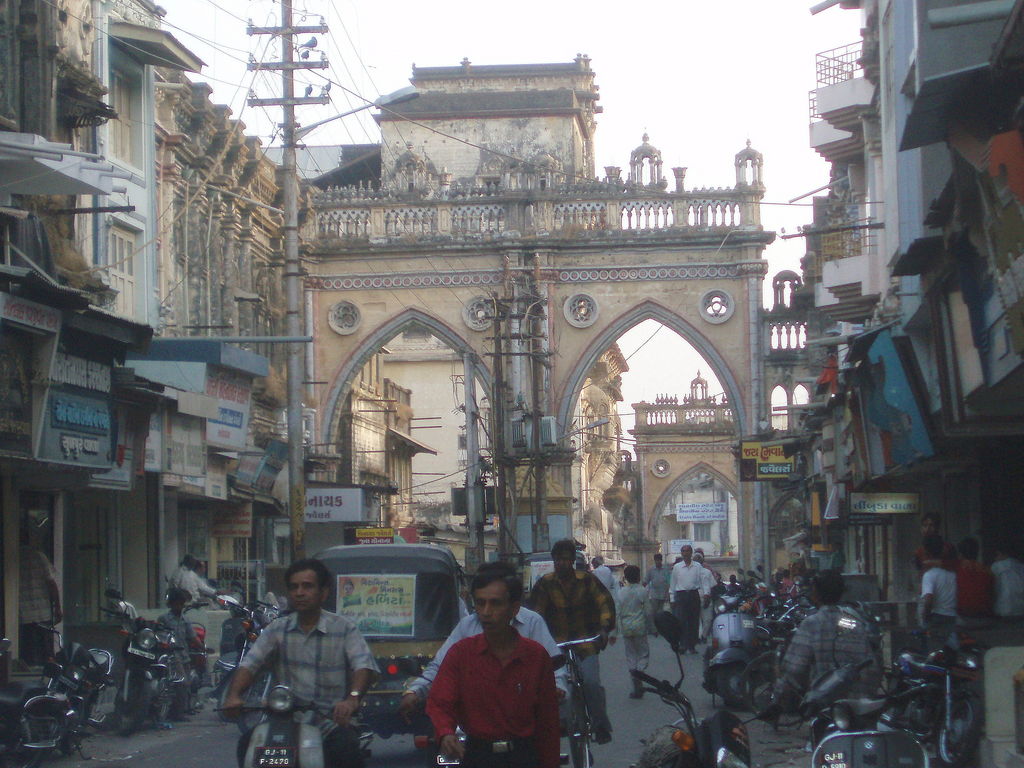I must say I was impressed by the setting and cinematography of the recent movie Dedh Ishqiya. The fading Begum Para and her crumbling mansion have been beautifully portrayed in the movie. The movie made me wonder and imagine the life and times of Nawabs of Awadh region. Legacy of Nawabs of Awadh is their contribution towards development of arts, crafts, language a unique culture.
Mahmudabad palace close to Luckhnow provides a fitting backdrop for the movie. This particular Qila or Kothi as they call it is a whopping 67,650 square feet (6,285 square meters) in size. The is a part of twenty acre complex comprising of private gardens and lakes. The Kothi played an important role during the Indian uprising of 1857, and was completely destroyed by the British. It rebuilt immediately thereafter using the original plinth.
The art director has beautifully transformed the palace and its interior in the movie. Whether it is the grand hall, or the living quarters of the begum or the beautifully lighted outdoors area where the mushayra competition is staged. The sepia tone of the palace and interiors subtly enhances its age while adding to the old charm.
Many such palaces lie in various states of disrepair all over the country. Many may have even vanished to make way for modern development. My only hope is the local governments and more importantly the people take initiative to identify and restore such beautiful monuments which stand as a testimony to our history. I hope such architectural legacies will find a place in our ever expanding urban environments.
 |
| Mahmudabad Palace, Mahmudabad, U.P. |
The present heir of the property fought a 32 year long battle to regain the control of property lost after independence due to various acts and ordinances. The sheer size of the property has made conservation difficult, especially since the parts of the building have been unused for 50 years and the combination of neglect, aging and seismic damage have further exacerbated the problems. As this wmf link states, the site is emblematic of the plight of many still privately owned 18th and 19th century palaces,for which the size and scale make conservation difficult.
And yes, Mads is stunning in the movie! So go watch it!
Links for further reading:
http://www.uppercrustindia.com/posts/52/The-Riyasat-Of-Raja-Mehmoodabad
http://www.uppercrustindia.com/posts/52/The-Riyasat-Of-Raja-Mehmoodabad

